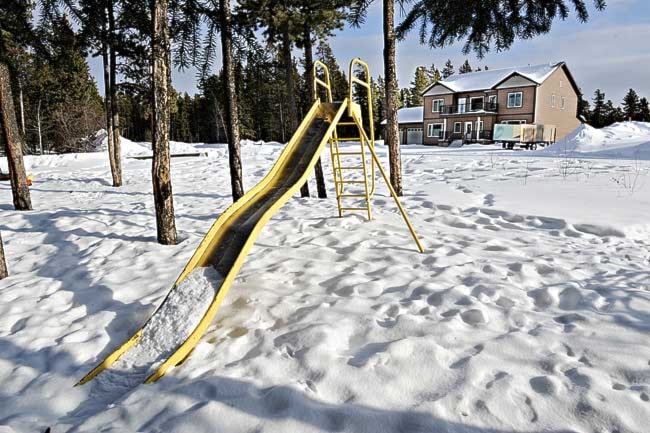A proposal by the city to add new infill lots to existing neighbourhoods has been met with resistance by some residents.
An online petition on Change.org had 132 signatures as of June 15. The petition, started by Craig Yakiwchuk, cites concerns regarding the protection of groundwater, wildlife habitat and green spaces, maintaining trails, and inconsistencies with the city’s sustainability plan and the proposed development.
Sites for the suggested infill lots include Mary Lake, Cowley Creek, Whitehorse Copper and Hidden Valley, many of which are classed as ‘country residential’ areas.
Yakiwchuk, who lives in Whitehorse Copper, said he has had “very intimate experience with infill.” When he purchased his property in 2008, he said, the lot behind his home was zoned for a school. In 2015, the city “changed its mind” about the site, and rezoned the area residential and sectioned it off into three lots, the closest of which, he said, is about 250 metres from his house.
The new residences damaged the performance of his well, he said.
“I have to haul water to water my garden and my grass now,” Yakiwchuk said. “I can’t even do two things at once in my house now, like run the dishwasher and the washing machine at the same time, because we are down to one gallon of water a minute.”
Yakiwchuk said the green spaces the city wants to put some of the infill lots in were designed to be buffer zones, designed to lower stress on the septic beds and well systems and protect the environment.
Kinden Kosick, a city planner and manager of the infill project, said the city hasn’t reviewed the environmental reports for all the proposed lots yet, but that they are looking carefully at water and sewer issues.
Mike Ellis, acting manager of planning and sustainability, said the city “still wants to keep adequate greenspace.”
Studies have shown that in most cases, adding lots is good for housing values and neighbourhoods, said Ellis.
The city has its own survey in place, said Kosick, which is available online on the city’s website. So far 420 people have take the survey, which closes June 17.
“We’ve had a variety of responses, both positive and negative,” said Kosick.
Some of the concerns raised in Yakiwchuk’s petition are “not valid” Ellis said.
“We have a process that we’ve set up to collect input on this … and an individually conducted petition is not something we will be considering, obviously,” he said.
Ellis said that while the city understands that not everyone is happy with the proposed sites, he stresses this is still an information-gathering and planning stage, nothing is set in stone, and that the city is “definitely listening” to feedback from residents.
Yakiwchuk disagrees.
“My impression is that they have a preconceived notion that this is going to happen,” he said.
Yakiwchuk said that he felt the questions in the city’s online survey were “loaded.”
He also said the way the city went about informing residents about the proposed infill lots was “deceiving” because they only told residents within a certain range of criteria the city itself set to determine who is “affected” by the lots, instead of informing whole neighborhoods.
“The way they proposed this whole thing is very defeating,” he said.
“I’m not against development, I don’t consider myself an environmentalist, but I feel like (the city) just doesn’t have a plan.”
Ellis said the city plans to take the information they have gathered after the survey closes to do some draft mapping of proposed sites, which will be released to their website. The information will be presented to city council sometime in July, with public consultation and hearings in September.
“We’re not in a rush,” said Ellis. “We want to give the public a chance to really look things over.”
“It’s not that we’re plowing ahead regardless. We’re gathering info.”
Yakiwchuk disagrees with that as well, calling the proposed sites a “knee-jerk reaction” to the city’s obvious housing issues.
“I’m not against country residential development,” he said. “It just seems to me that they’re in a rush, without a plan, working in panic mode.”
Ellis said that, regardless, the city needs more lots because people need more houses.
“Growth (in the city) has been steady for a while now. Lots of people want to live here, move here, retire here, make homes for their families here,” said Ellis.
“It’s really a refinement about making decisions about what works and what doesn’t,” said Kosick. “There’s going to be some tough decision and compromises.”
Contact Lori Garrison at lori.garrison@yukon-news.com
